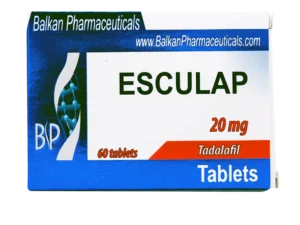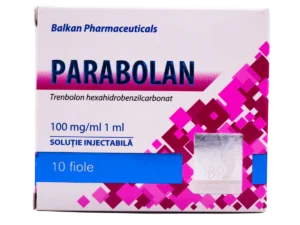Introduction
In the world of fitness and exercise, the focus is often on pushing our bodies to their limits and achieving new milestones. However, what many people fail to recognize is the importance of proper recovery techniques in maximizing the benefits of their training. Recovery is an essential component of any fitness regimen, as it allows the body to repair and adapt to the stress placed upon it during exercise.
Recovery techniques encompass a wide range of strategies, including rest, nutrition, hydration, and various therapeutic modalities. The goal of these techniques is to optimize the recovery process, reduce the risk of injury, and enhance overall performance. By incorporating effective recovery methods into our fitness routines, we can improve our ability to train consistently, prevent overtraining, and achieve better results.
One of the key aspects of recovery is ensuring adequate rest and sleep. During sleep, the body undergoes crucial repair processes, such as muscle tissue regeneration and hormone regulation. Lack of sleep can impair these processes, leading to decreased performance, increased risk of injury, and hindered progress towards fitness goals. Therefore, prioritizing quality sleep is essential for optimal recovery.
Nutrition also plays a vital role in the recovery process. Consuming a balanced diet that includes an adequate amount of protein, carbohydrates, and healthy fats is crucial for providing the body with the necessary nutrients to repair and rebuild muscle tissue. Additionally, proper hydration is essential for maintaining optimal bodily functions and facilitating the removal of metabolic waste products.
In addition to rest and nutrition, various therapeutic techniques can aid in recovery. These include foam rolling, stretching, massage therapy, and cold-water immersion. Foam rolling and stretching help to release muscle tension, improve flexibility, and enhance blood flow, promoting faster recovery. Massage therapy can further aid in reducing muscle soreness, improving circulation, and increasing relaxation. Cold-water immersion, such as ice baths or contrast showers, can help reduce inflammation and promote recovery after intense workouts.
In conclusion, recovery techniques are a critical aspect of any fitness program. By prioritizing rest, nutrition, and incorporating therapeutic modalities, individuals can enhance their recovery process, reduce the risk of injuries, and optimize their training outcomes. Understanding and implementing effective recovery strategies will not only improve overall performance but also contribute to long-term health and well-being.
Recovery Techniques in Fitness
The Importance of Active Recovery
When it comes to fitness, many individuals focus solely on the intensity of their workouts, often neglecting the importance of recovery. Recovery is not just about passive rest; it also involves active techniques that aid in the repair and rejuvenation of the body. Active recovery refers to engaging in low-intensity activities that promote blood flow, enhance muscle repair, and reduce muscle soreness.
One effective active recovery technique is light aerobic exercise. Engaging in activities such as brisk walking, cycling, or swimming at a moderate pace can help flush out metabolic waste products, improve circulation, and promote the delivery of oxygen and nutrients to the muscles. Additionally, light aerobic exercise can help alleviate muscle stiffness and soreness, making it an excellent choice for recovery days.
The Role of Stretching and Flexibility Exercises
Stretching and flexibility exercises are crucial components of any recovery routine. They help improve joint mobility, enhance muscle flexibility, and reduce the risk of injury. Static stretching, where a muscle is stretched and held for a prolonged period, can help lengthen muscle fibers, improve range of motion, and promote relaxation.
Dynamic stretching, on the other hand, involves moving the muscles and joints through a full range of motion. This type of stretching is particularly beneficial before a workout, as it helps warm up the muscles and prepare them for more intense activity. Incorporating both static and dynamic stretching into a recovery routine can aid in muscle recovery and improve overall flexibility.
The Power of Massage Therapy
Massage therapy is a widely recognized recovery technique that offers numerous benefits. It helps reduce muscle tension, improve blood flow, and promote relaxation. Massage can also aid in the removal of metabolic waste products, such as lactic acid, which can accumulate in the muscles during exercise and contribute to muscle soreness.
There are various massage techniques that can be utilized for recovery purposes. Swedish massage involves long, flowing strokes and kneading motions to promote relaxation and improve circulation. Deep tissue massage targets deeper layers of muscle tissue, helping to release chronic muscle tension and knots. Sports massage is specifically tailored to athletes and focuses on preventing and treating injuries, improving flexibility, and enhancing performance.
The Role of Nutrition and Hydration
Proper nutrition and hydration are essential for effective recovery. Consuming a well-balanced diet that includes an adequate amount of protein, carbohydrates, and healthy fats is crucial for providing the body with the necessary nutrients to repair and rebuild muscle tissue. Protein, in particular, plays a vital role in muscle recovery and growth.
Hydration is equally important, as it helps maintain optimal bodily functions and aids in the removal of metabolic waste products. Dehydration can lead to decreased performance, muscle cramps, and impaired recovery. It is recommended to drink water before, during, and after exercise to ensure adequate hydration.
Conclusions
In conclusion, recovery techniques are integral to achieving optimal results in fitness. Active recovery, including light aerobic exercise, promotes blood flow and muscle repair. Stretching and flexibility exercises improve joint mobility and reduce the risk of injury. Massage therapy aids in muscle relaxation and the removal of metabolic waste products. Proper nutrition and hydration provide the necessary nutrients for muscle recovery and growth. By incorporating these recovery techniques into a fitness routine, individuals can enhance their overall performance, prevent injuries, and achieve their fitness goals more effectively.
Practical Recommendations for Effective Recovery
1. Prioritize Rest and Sleep
Make sure to allocate enough time for quality sleep each night. Aim for 7-9 hours of uninterrupted sleep to allow your body to repair and recover effectively. Create a relaxing bedtime routine and ensure your sleep environment is conducive to restful sleep.
2. Incorporate Active Recovery Days
Schedule regular active recovery days into your fitness routine. Engage in low-intensity activities such as walking, swimming, or yoga to promote blood flow, reduce muscle soreness, and enhance overall recovery.
3. Implement Regular Stretching and Flexibility Exercises
Dedicate time to perform both static and dynamic stretching exercises. Incorporate stretching routines before and after workouts to improve joint mobility, enhance muscle flexibility, and reduce the risk of injury.
4. Consider Regular Massage Therapy
Schedule regular sessions with a qualified massage therapist to aid in muscle recovery and relaxation. Choose massage techniques that align with your specific needs, such as Swedish massage for relaxation or deep tissue massage for addressing muscle tension.
5. Follow a Balanced Diet
Ensure your diet includes a variety of nutrient-dense foods, including lean proteins, whole grains, fruits, and vegetables. Consume adequate protein to support muscle repair and growth. Avoid excessive consumption of processed foods, sugary snacks, and drinks that can hinder recovery.
6. Stay Hydrated
Drink water consistently throughout the day, especially before, during, and after exercise. Aim to consume at least 8-10 cups of water daily to maintain optimal hydration levels and support the removal of metabolic waste products.
7. Listen to Your Body
Pay attention to any signs of fatigue, pain, or overtraining. Adjust your training intensity or take additional rest days when needed. Pushing through excessive fatigue or ignoring pain can lead to injuries and hinder your recovery progress.
8. Use Heat and Cold Therapy
Alternate between heat and cold therapy to aid in muscle recovery. Apply a heating pad or take a warm bath to promote blood flow and relaxation. Use ice packs or cold water immersion techniques to reduce inflammation and alleviate muscle soreness.
9. Practice Stress Management
Incorporate stress management techniques such as meditation, deep breathing exercises, or yoga into your routine. Chronic stress can hinder recovery, so it’s important to find healthy ways to manage stress levels.
10. Monitor Progress and Adjust Accordingly
Regularly assess your recovery strategies and their impact on your overall well-being and performance. Make adjustments as needed to find the most effective techniques for your body and fitness goals.
By implementing these practical recommendations, you can optimize your recovery process, reduce the risk of injuries, and enhance your overall fitness journey. Remember, recovery is just as important as the workouts themselves for achieving long-term success in fitness.






